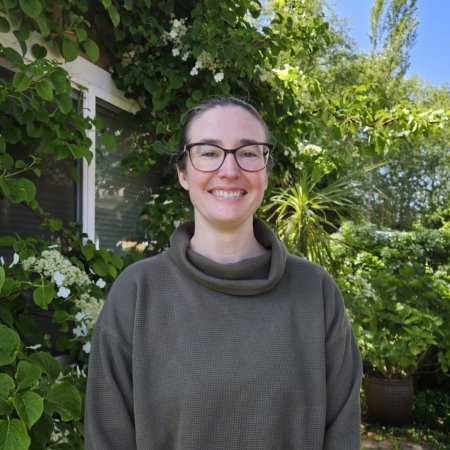Josh Stevens, an army veteran and a mid-career IT analyst at State Farm in Bloomington, Illinois, had been searching for the right online data analytics program for well over a year. The perfect match continued to be elusive. Either the curriculum fell short or the prerequisites weren't a fit and more often than not the tuition costs were steep. When he came across Oregon State University's new Master of Science Data Analytics program offered by the Department of Statistics, the price tag was immediately attractive to him.
At $28-$30,000, Steven found the program to be half the cost of data analytics programs at a lot of other universities. A data scientist who reviewed the curriculum assured Stevens that it would teach "the skills that are highly sought after in the field."
Close to finishing his first year in the program, Stevens couldn't be happier with his decision. Stevens considers the excellent teaching, the rigor of the courses and the lecture delivery mechanisms and technology to be the strongest attributes of the Data Analytics program.
"I am deeply appreciative of the amount of content that was taught and impressed by the powerfully effective teaching."
OSU Statistics is giving students like Stevens access to the training that will turn them into data scientists for companies, start-ups, governments agencies and research think tanks that are flooded with big data—a mind-boggling variety and volume of information about consumers, products and processes that has not been seen before.
One of the oldest statistics programs in the country, OSU Statistics recently took the big data plunge by launching two new online programs that teach students across the country how to turn massive troves of data into structured, practical and understandable information. The department has started an online Master of Science and a Graduate Certificate in Data Analytics programs, the first of their kind in Oregon.
The 45-credit two-year master's program and the 18-credit one-year graduate certificate will train professionals to make smart analytical decisions to understand massive data sets and answer crucial questions for businesses, companies and academic research.
Job surveys for the top 10 best jobs in the last three years have consistently ranked statistics-related careers very high on a list based on the criteria of income, growth outlook, stress and environmental factors. The message is unambiguous: talented statisticians and data geeks rule the market.
The 2017 jobs report released by career website CareerCast.com has even better news: Statistician tops the list as the No.1 job, and other quantitative and data-focused jobs follow close behind: Operations Research Analyst is No. 3 and Data Scientist is No. 5. Glassdoor's list of 50 best jobs in America has Data Scientist as the No. 1 job and Analytics Manager at No. 5.
The science and art of mining and distilling useful information from huge datasets has never been in greater demand, and the department is doing its share to meet the surging need for data analytics skills in this era of data explosion.
The Bureau of Labor Statistics projects demand for statisticians to grow 34 percent nationwide between 2014 and 2024. An eye-opening 2011 report from McKinsey Global Institute indicates there could be a shortage of 140,000-190,000 analytically skilled workers by 2018. A routine search reveals hundreds of openings for data science jobs in Oregon itself, ranging from iconic Portland-area companies such as Nike and Intel to fast-paced startups and a myriad of environmental, healthcare and consulting companies.
All trends indicate that data science is a sector in which demand outstrips supply, and if you possess a love for data and a talent for numbers, a bright future awaits.
The strengths of OSU data analytics
As educational openings proliferate in data analytics, OSU Statistics easily stands out among its peers in several important ways.
OSU statisticians are highly skilled at dealing with large qualities of complex and messy data and many have extensive experience mining data for insights across the fields of environmental science, agriculture, forestry and engineering. The courses in the new data analytics program are taught by award-winning and outstanding research faculty who have extensive hands-on experience and exposure to real big data challenges across academic and non-academic fields.
The online programs are offered through Oregon State Ecampus, which consistently ranks as one of the nation’s best providers of online education. In January 2017, OSU’s online programs were ranked in the top 10 for the third year in a row by U.S. News & World Report.
Statistics professors as well as faculty from the School of Electrical Engineering and Computer Science have created a rigorous, interdisciplinary curriculum that combines statistics, computer science, mathematics and plenty of real world data projects to give students deep and valuable experience with how to grapple with large amounts of variables and expose the underlying data structure. The objective is to impart a foundation in statistical reasoning, software and programming skills, and real-world experience that will make the graduates appealing to employers in a variety of industries.
Students are trained in advanced computational and statistical skills spanning the collection and storage of data to modelling, analysis, and the efficient communication of results to stakeholders. The online graduate program also offers an option in health analytics, where students can take elective courses in topics such as quantitative genomics—a specific track for people interested in pursuing public health or pharmaceutical research.
The M.S. program finishes up with a capstone project, a concrete example students can provide to an employer as evidence that they are ready to hit the ground running.
Stanford trained statistician Sarah Emerson has taught ST 517 (Data Analytics I) and is gearing up to teach ST 558 (Multivariate Analytics) in the Fall. An associate professor of statistics, Emerson believes the program's biggest strengths are its focus on the different quantitative tools and methods in data analytics as well as an edge it offers students in practical analytics training through its combined statistics and computer science curriculum. Computer science core courses cover topics in programming, big data management and applied machine learning.
"The most tangible skills are the three different programming languages that students will learn: R, SAS and Python," Emerson said.
These three are the most in-demand and popular programming languages in the business world. But Emerson is also keenly interested in encouraging certain habits of critical thinking in her class as students engage with pressing issues that have emerged with large datasets in the present day.
“One of my goals is that students in our courses can choose appropriate statistical analysis tools given a particular data set in the real world and understand what questions can be answered with a particular methodology,” said Emerson.
So far, Stevens has taken courses in the foundations of data analytics where he has learned the gamut of statistical modeling frameworks, predictive modeling, R, Python, survey methods and machine learning. Stevens, who holds a master's of science in technology management, entered the program without much of a statistical background. But after putting in 20-30 hours of work every week on his online data analytics coursework, Stevens is closing the gap. He has acquired statistical and analytical capabilities such as data visualization that are already paying off in his workplace.
"I didn’t know how to use R earlier. Now I am able to use R at my job for a variety of tasks—exploratory data analysis, visualizing large datasets—things that are impossible to capture in Excel,” said Stevens.
Stevens is also undaunted by the amount of work required as a student of data analytics. “It is not a program you can take lightly and set aside just two to three hours for every week. If it wasn’t challenging, I would question its value. It is pretty incredible what I have been able to learn in the last three quarters."
If you are fearless about the work involved, then the data analytics program may well be your cup of tea. They are well-suited to professionals looking to develop additional skills and learn specific tools in data analytics, as well as to an on-campus OSU students who wish to understand statistics and analytic practices for their research or future career prospects.
Teaching and learning data analytics in a virtual classroom
Assistant professor Charlotte Wickham, a Ph.D. in statistics from University of California, Berkeley, is a specialist in R training and has taught online courses in data visualization and the foundations of data analytics. She has taught diverse groups of online students, some of whom are enrolled in the online Masters statistics programs and others who hail from disciplines such as fisheries and wildlife and ecology.
Wickham has been pleasantly surprised by the discoveries she has made while teaching her first course in the program, chiefly among them being high levels of peer interaction and an enthusiastic and collaborative learning atmosphere.
“Students have been really forward with asking questions in the online discussions, and not having to respond on your feet means my responses are generally more complete," said Wickham.
The online data analytics lectures leveraged by the top-ranked OSU Ecampus are of a very high standard and quality. Lectures and slides are thoughtfully prepared using state-of-the-art and innovative course delivery strategies keeping in mind student retention and engagement. There is a lot of emphasis on "student engagement, student support and student satisfaction."
“Ecampus is fantastic in terms of the resources it provides. We are fortunate that Ecampus makes class engagement a big focus in online course preparation. They provide the technological support and the necessary pedagogical feedback to ensure there is a direct interactive perspective in our lectures to keep students involved, interested and attentive," observed Emerson.
Emerson found that the discussion boards were always abuzz with ideas, voices and statistical solutions.In addition to discussion boards, online quizzes and online labs create a rich, diversified learning environment, in which students learn and achieve more than they thought possible in an online program.
“It was a multi-faceted experience. My online students were required to contribute, but their contributions went well above and beyond the required level. It works out very well for the students because it turns out to be what they needed and what fit into their lives.”
Although online courses are completely prepared and all lectures pre-recorded well before students actually go through the class, at OSU it continues to be an interactive process between students and teachers through Skype chats, emails and discussion boards.
“I expect instructor involvement is not unique to OSU. But I know that is not the way some online courses are taught. We want to keep our students interact with each other, interact with the instructor and learn from the interaction process," added Emerson.
This combination of inspiring and high-quality teaching as well as exposure to statistical and computational tools to analyze data are helping professionals succeed as data scientists. Stevens is rapidly gaining skills in advanced analytics that are helping him excel at his present job and multiplying his professional options.
"The Masters of Science program is enhancing my career prospects in several ways,” said Stevens. “It makes me more effective at work and more well-rounded in my work as an IT analyst. It also allows me more options should I decide to change careers.”
The advance of big data shows no signs of slowing and OSU's online data analytics program are training a new generation of data scientists with the rare and highly marketable combination of statistical and computational skills and scientific thinking.




